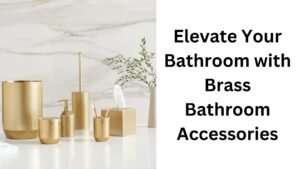The postpartum period excites and challenges new mothers as they recover, manage physical changes, and adjust to life with a newborn. Proper postpartum care plays a crucial role in these transitions, yet it often goes overlooked. Postpartum care pads, specifically designed to offer comfort, protection, and hygiene, are essential during this recovery period. This article explores various aspects of postpartum pads, covering their purpose, features, types, and practical usage to help new mothers prepare well for their recovery journey.
What Are Postpartum Care Pads?
Postpartum care pads are specially designed absorbent pads that women use after giving birth. In contrast to regular menstrual pads, these pads cater specifically to the unique needs of postpartum recovery. After childbirth, women experience lochia, which is the vaginal discharge containing blood, mucus, and uterine tissue. Furthermore, this discharge can last for several weeks and varies in heaviness, making it essential to use highly absorbent pads that provide adequate protection and comfort. As a result, postpartum pads offer the support women need during this critical healing period.
The Purpose of Postpartum Pads:
The primary purpose of organic postpartum pads is to absorb the lochia and provide comfort during the recovery phase. They help manage the heavy flow immediately after childbirth, ensuring women feel secure and protected as they heal. Additionally, postpartum pads minimize the risk of leaks, addressing a common concern during this time. The right pads can also help reduce discomfort, promote healing, and maintain hygiene, contributing to overall postpartum well-being.
Key Features to Consider
When selecting postpartum pads, consider several key features to ensure maximum comfort and effectiveness.
Absorbency:
One of the most critical features of postpartum pads is their absorbency. New mothers should look for pads that can handle the initial heavy flow often experienced in the first few days after childbirth. Many brands offer various absorbency levels, so choosing pads specifically labeled for postpartum use is essential.
Size and Shape:
Postpartum pads come in various sizes, and choosing a size that provides adequate coverage is vital. Longer pads may be necessary to accommodate different body positions, especially while sitting or lying down. Additionally, some pads are contoured to fit the body better, enhancing comfort and effectiveness.
Comfort and Softness:
After childbirth, many women experience heightened sensitivity. Choosing pads made from soft, hypoallergenic materials can help reduce irritation and discomfort. It’s advisable to look for pads with a soft top layer to provide a comfortable feel against sensitive skin.
Breathability:
Breathability is another essential feature to consider. Pads made from breathable materials help prevent moisture buildup, reducing the risk of irritation and infections. Look for pads that promote airflow while still offering high absorbency.
Adhesive Quality:
Strong adhesive ensures that postpartum pads stay in place throughout the day. Women should look for pads with reliable adhesive strips that keep the pad securely attached to their underwear, minimizing the risk of leaks.
Types of Postpartum Care Pads
There are primarily two types of postpartum pads available: disposable and reusable.
Disposable Pads:
Disposable postpartum pads are designed for single use and are often more convenient for new mothers. They are typically made from soft, absorbent materials and are available in various sizes and absorbency levels. Disposable pads are a popular choice due to their ease of use, as they can be simply thrown away after use. Many brands also offer ultra-thin options that are discreet and comfortable.
Reusable Cloth Pads:
Reusable cloth pads are a sustainable option for postpartum care. Made from natural fibers, these pads can be washed and reused, making them an eco-friendly choice. Many women prefer cloth pads for their softness and breathability. However, they require more maintenance and may not be as convenient as disposable options.
Additional Features to Look For
Organic and Chemical-Free Options:
Many brands now offer organic and chemical-free postpartum pads for those concerned about chemical exposure. These pads are made from natural materials without harmful substances, making them a healthier option for new mothers and their babies.
Odor Control:
Postpartum pads with odor control features can help minimize any unpleasant smells associated with lochia. Some brands use natural materials or special technologies to neutralize odors, providing added comfort and confidence.
Individually Wrapped Pads:
Individually wrapped postpartum pads are convenient for on-the-go use. They allow new mothers to carry pads in their bags without worrying about hygiene or cleanliness.
How to Use Postpartum Care Pads Effectively
Proper Placement:
Proper pad placement is crucial for optimal absorbency and comfort. Position the pad in the center of the underwear, ensuring it covers the necessary areas for protection. Adjust as needed for a secure fit.
Changing Frequency:
New mothers should aim to change their pads regularly, typically every 3 to 4 hours, or even more frequently during heavy flow days. Changing pads regularly helps maintain hygiene, reduces the risk of infection, and ensures maximum comfort.
Conclusion
These pads support women’s healing processes during a transformative time by providing essential absorbency, comfort, and hygiene. Moreover, with options available in both disposable and reusable formats, mothers can easily choose products that suit their needs and preferences. Additionally, by selecting high-quality pads and practicing regular changes, new mothers can ensure a more comfortable and confident postpartum experience. This approach allows them to focus on bonding with their newborns while also prioritizing their well-being. Ultimately, making informed choices about postpartum pads enhances the recovery journey and contributes to a positive experience for new mothers.






More Stories
Understanding Commercial Real Estate Agencies
Best Places to Invest in Real Estate in 2024
Exploring Fabric Stores in Sarasota, Florida